We back
Winter in New York is over and so is my seasonal depression. Let’s get back to art history! I visited the Whitney Biennial show last weekend. It’s a huge exhibition to tackle - definitely need to be ready for that going in. Some highlights and an overview of the show (open until August 11th):
Brief biennial background
In the art world, biennials are major contemporary art exhibitions that take place every two years. The first was the Venice Biennale, started in 1895. They’re kind of similar to a World Fair, bringing together art from around the world as a sort of snapshot of the state of contemporary art then. An artist representing their home country at their Venice Biennale pavilion is a big deal for contemporary artists!
Biennials aren’t sales but they do point towards what’s up and coming in the market. Inclusion in a significant biennial means acceptance by the art world and is often extremely beneficial to an artist’s sales. It also benefits the city or institution that hosts it - these are popular shows and can draw a lot of attention. (Like the Olympics of art!)
The Whitney’s Biennial specifically started in 1932 and featured only American artists for quite a while, highlighting the development of contemporary art culture in the US. Now, it emphasizes diversity in artists’ mediums, backgrounds, and themes, although the theme of the exhibition attempts to make a cohesive show.
“Even Better Than The Real Thing”
The theme this year is “even better than the real thing,” and the introduction talks about the impact of AI and our perception of what is real. It’s kind of widely agreed by critics that there are minimal AI mentions despite what the overview says so that’s a little misleading. But in a good way! The artists instead have a lot of discussion of the environment, women’s rights, and our relationships to other people around us. There’s a greater range it seems vs. the 2022 exhibition, which focused (understandably) on the pandemic and issues of race.
Some faves from the exhibition
I really liked the parts of the Biennial that force visitors to engage with the art, either by being surrounded by/immersed in it in the space or participating/touching it.
First example of this - P. Staff’s Afferent Nerves is an entire room of yellow with an electrified net you walk under. The Whitney’s website explains that they “amplify viewers’ awareness of their surroundings, the artwork, and their safety in the gallery.”
Another entire room one is Nikita Gale’s self-playing piano:
Gale worked with a team of technologists to have the “performance” only include the sound of the instrument being played, not any of the musical notes. They isolated those sounds (like the keys or pedals clicking). The piece explores the relationship between performance and the work itself.
Sharon Hayes used her space in the Biennial to have visitors literally sit with her work, titled Ricerche: four:
Visitors sit in these chairs like they are completing the circle of the conversation the video portrays. For this edition of the series of interviews, she speaks with older members of the LGBTQIA community and asks them to reflect on their experiences and identities. It reflects the value of community and by sitting and completing the circle, viewers choose to join that community.
Isaac Julien’s Once Again … (Statues Never Die) was so cool. It really immerses you in the video about Alain Locke’s interaction with the Barnes Collection and relates a lot to the present day’s conversation around restitution.
Kiyan Williams used soil to recreate the facade of the White House - symbolic and kind of easy for people to attach meaning to, particularly in an election year:
Continuing the political theme - Demian DinéYazhi’ contributed a much-talked-about long-form poem in neon with flickering letters:
The curators didn’t realize that those flickering letters revealed a message - “Free Palestine.” It only came to light after the press opening for the show, with DinéYazhi´ using the opportunity to comment on current world events (which I feel should probably be the point of the show).
A quote from DinéYazhi´ I really like as a reminder to get the most out of this/any exhibition: “I hope they see the complexities of the issues that lie underneath the surface — that they don’t just take a photograph, upload it to social media and move on.”
Learn more about it
More info on biennials from Tate
Podcast from Artnet News
Whitney Biennial 2024 website
NYT article about Kiyan Williams’ contribution
CNN article about Demian DinéYazhi´
Recs to go with it
Walk the High Line or West Side Highway after you visit!
The Frenchette Bakery on the ground floor is yummy

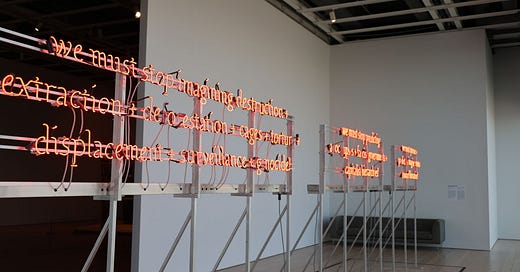

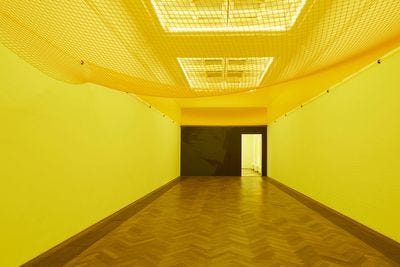
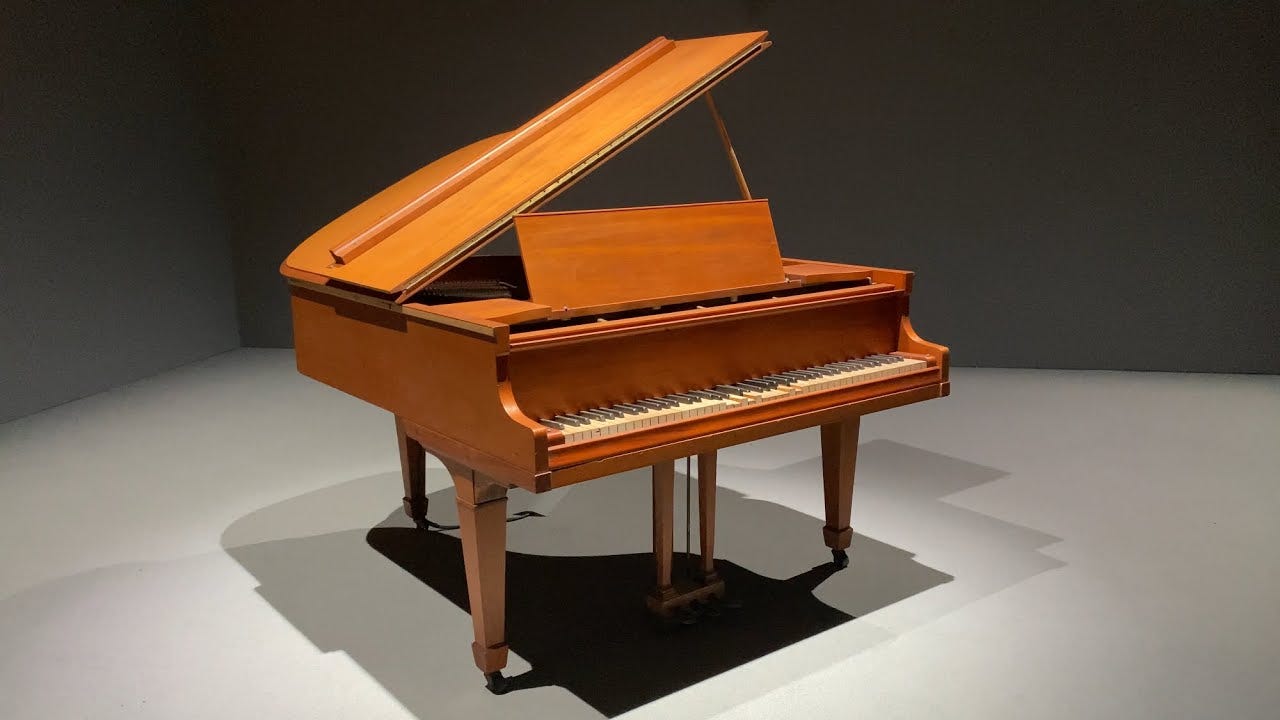
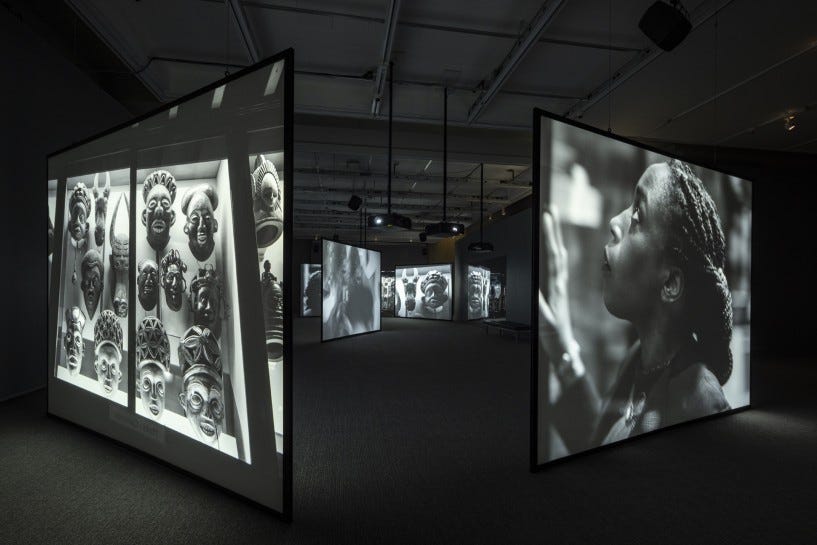
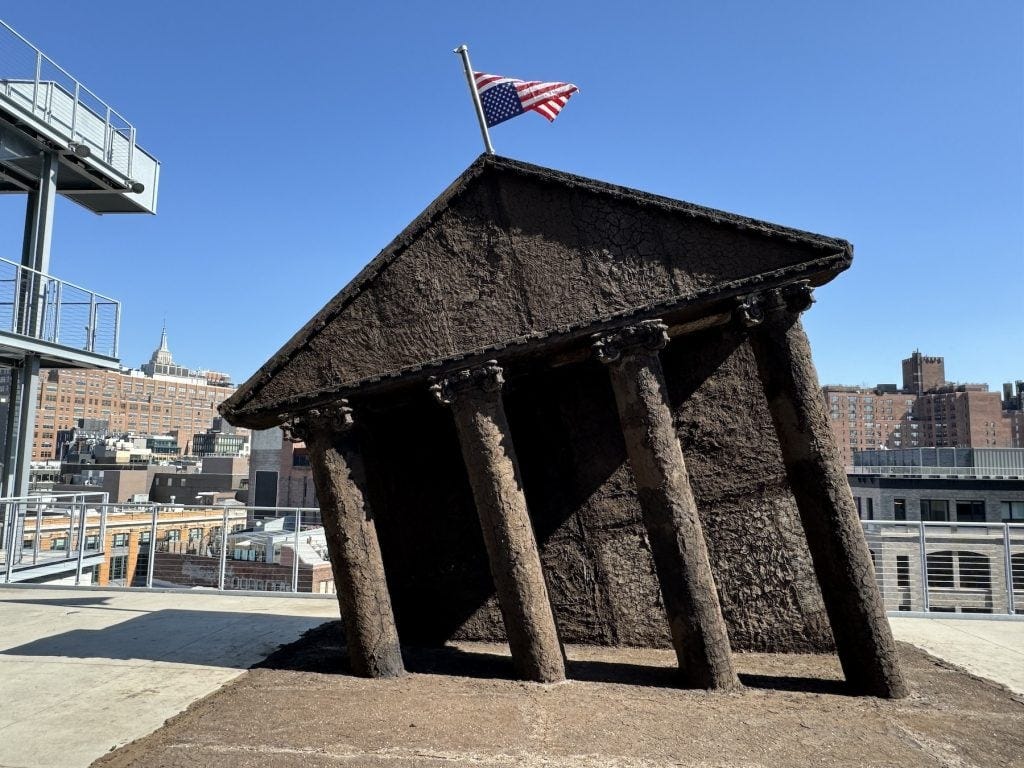

This is a great breakdown and exploration of the show!